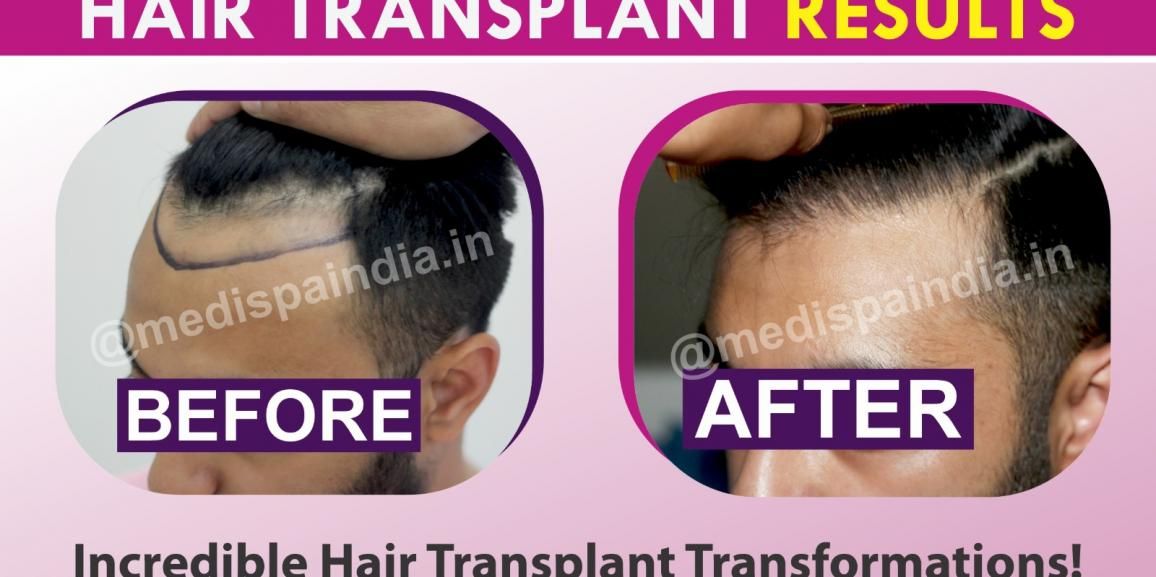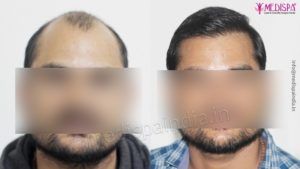
Hair transplantation is widely regarded as the most effective solution for treating baldness. It offers a permanent remedy for hair loss, ensuring not only regrowth but also a natural appearance. Consequently, hair transplant procedures have gained popularity among individuals suffering from hair loss worldwide.
In recent years, India has emerged as a leading destination for hair transplants, hair transplant in Jaipur in particular garnering significant attention. The city is renowned for its exceptional hair transplant industry, boasting a handful of world-renowned doctors. Moreover, the hair transplant cost in Jaipur has decreased due to intense competition among providers.
Among the top hair transplant clinics in India, Medispa stands out as a highly reputable establishment. Our clinic is widely recognized as the best in the field, thanks to the exceptional skills of our team. With a track record of successfully treating over 10000 patients, we consistently deliver outstanding results.
Over time, hair transplant procedures have evolved significantly. While older methods may have yielded satisfactory outcomes, newer techniques now ensure a more natural appearance post-transplantation.
Hair transplant
Hair transplantation is a cosmetic surgical procedure that is minimally invasive. It involves extracting hair follicles from the donor area, typically the back and sides of the head, or other areas of the body with sufficient hair density. These harvested hair follicles are then transplanted into the bald area of the recipient. This procedure requires a high level of precision and expertise, and should only be performed by skilled surgeons. The steps involved in hair transplant surgery are as follows:
- The hairs are trimmed according to the chosen procedure and technique. For FUT hair transplant technique, only minimal shaving is required from the strip harvesting area. However, for FUE technique, complete shaving is necessary.
- Following the trimming, both the donor area and recipient area are locally anesthetized.
- The harvesting of grafts is performed based on the chosen technique. In the case of FUT hair transplant technique, a thin strip is harvested and then dissected to retrieve individual grafts. After the strip is harvested, an advanced technique called trichophytic closure is used to close the donor area, resulting in an almost invisible scar.
- The recipient site is prepared through a process known as slitting. This step is crucial and should be carried out with careful planning to ensure aesthetic outcomes.
- The hair grafts that have been retrieved are then planted into the prepared slits at the recipient site.
- After the hair transplant procedure, small circular clots form around the newly transplanted hairs. These clots are washed off by the professional team at the clinic on the second day following the transplant.
- The patient is provided with a list of instructions to follow after the procedure. It is important to strictly adhere to these instructions as explained by your hair transplant surgeon.
What leads to scarring after hair transplant?
Scarring is an inevitable outcome of hair transplant surgery, as it is with any surgical procedure. While it is possible to achieve nearly imperceptible scars under ideal circumstances, complete scar-free results cannot be guaranteed. What leads to the development of significant scarring?
- The use of outdated techniques and equipment during the hair transplant procedure.
- Insufficient training of the surgeon.
- Lack of experience and qualifications of the surgeon.
Is there a way to reduce scarring after a hair transplant procedure?
The field of hair transplantation has seen significant advancements in recent times, thanks to innovative ideas and cutting-edge technology. With the right techniques and expertise, it is now possible to greatly minimize scarring associated with hair transplants. Let’s delve deeper into the methods used to achieve this goal.
Scars after the FUT hair transplant
In an FUT hair transplant procedure, a strip of skin measuring 1.5–2 cm is removed from the donor area by the surgeon. This strip is then divided into smaller sections to extract individual hair follicles, which are then handed over to the experts. Suturing is required at the donor site to facilitate painless healing after strip harvesting; failure to do so properly may lead to scarring. Following the extraction of hair grafts from the donor sites, they are transplanted into the recipient area. To prevent scarring, it is essential to suture the donor area using a modern technique known as “Trichophytic closure.” This technique involves beveling one side of the incision and overlapping the edges when closing them. By utilizing this method, nearly imperceptible scars can be achieved, along with the possibility of hair growth over the incision line.
Scars after FUE hair transplant
After undergoing a FUE hair transplant procedure, scarring may occur. During this process, individual hair grafts are extracted from the donor area using a specialized punch-like tool. The size of the punch used plays a significant role in determining the extent of scarring. Extracting a higher number of hair grafts with a larger punch can lead to noticeable circular scars. To minimize scarring, it is essential to carefully harvest the hair grafts with a smaller diameter punch, ensuring that the scars are nearly undetectable. Utilizing improved punching tools with reduced diameters can effectively eliminate scarring. Therefore, selecting the appropriate punch device size is crucial in reducing the risk of scarring.
Medispa hair transplant clinic provides a comfortable and painless hair transplantation experience. Dr. Suneet Soni utilizes advanced techniques and technology to perform hair transplants with minimal scarring. As one of the leading hair transplant surgeons in India, Dr. Soni is highly respected for his exceptional surgical skills and artistic vision. For the best hair transplant results in a pain-free environment, consider visiting Medispa clinics in Jaipur and Delhi.
Scar Repair:
There are only a few methods available to conceal the scar caused by the FUE or FUT technique:
- Utilizing FUE-extracted grafts for repair: By implanting FUE-extracted grafts around the scar, it becomes less noticeable and almost scar-free. Since your own hair is used for the repair, it grows naturally and looks authentic.
- Trichophytic closure: This technique involves closing the donor site before performing the FUT hair transplant. It helps in minimizing the incision line, promoting tissue overlapping, and ultimately leading to nearly scarless healing.
- Scalp micropigmentation: This method of tattooing is used to cover up scalp scars by creating small dots resembling hair around the scar area.
Medispa, one of the most reputable hair transplant clinics, provides top-notch results with minimal scarring in Delhi and Jaipur. We do not endorse false claims of scarless surgery, but we assure exceptional natural outcomes with minimal scarring due to our expert-oriented approach and the expertise of Dr. Suneet Soni, who has successfully completed over 10,000 hair transplants.







